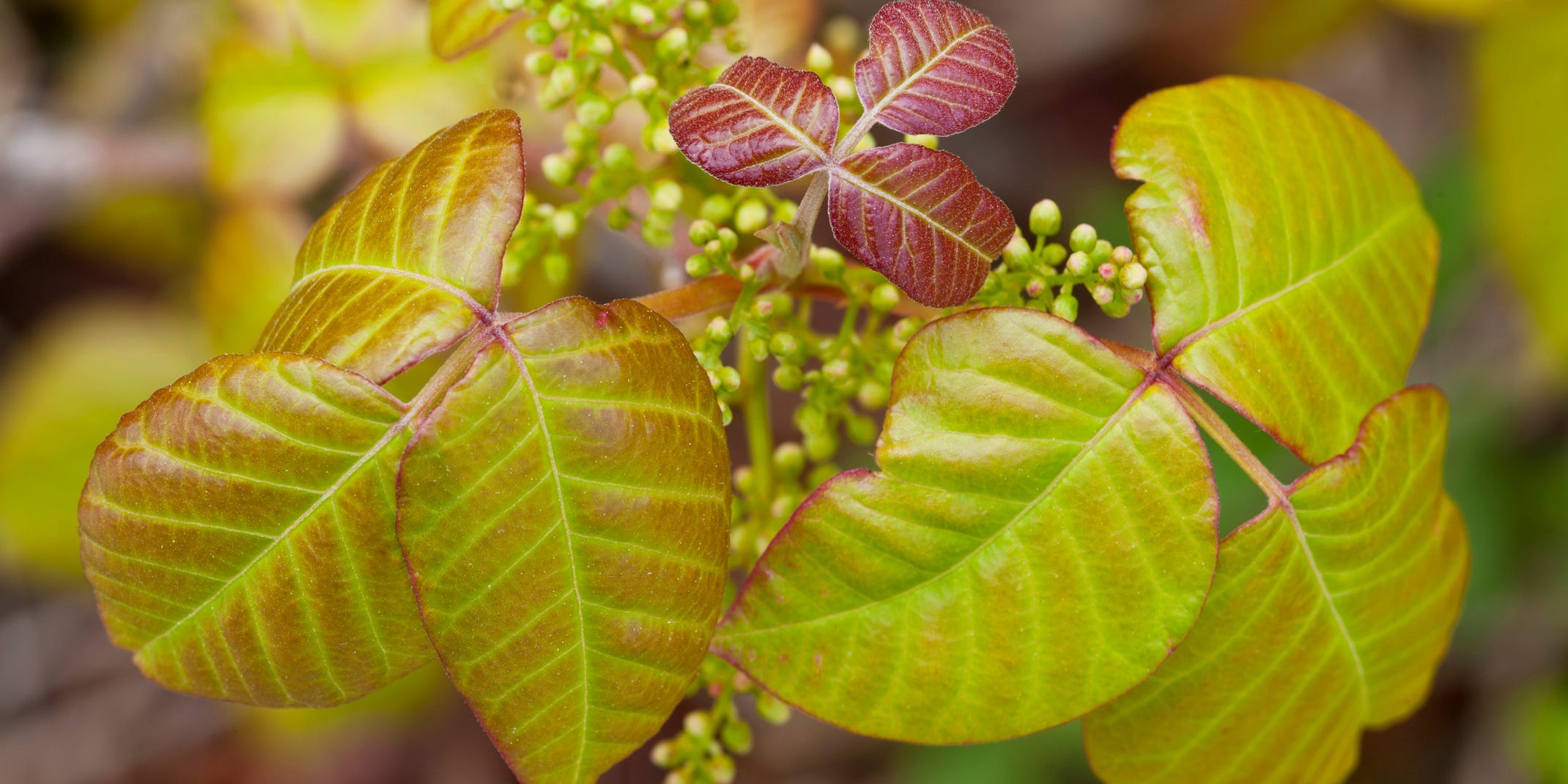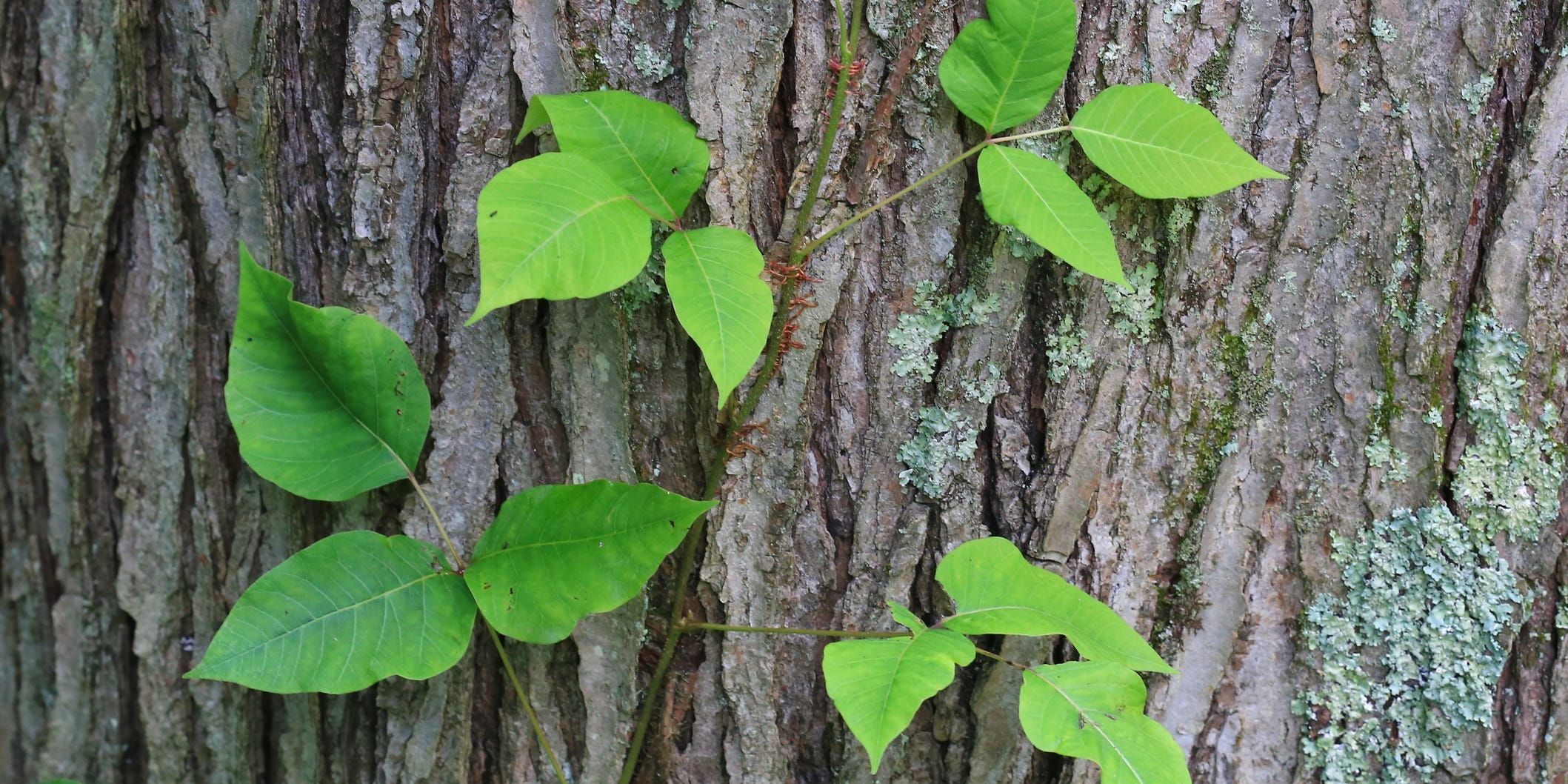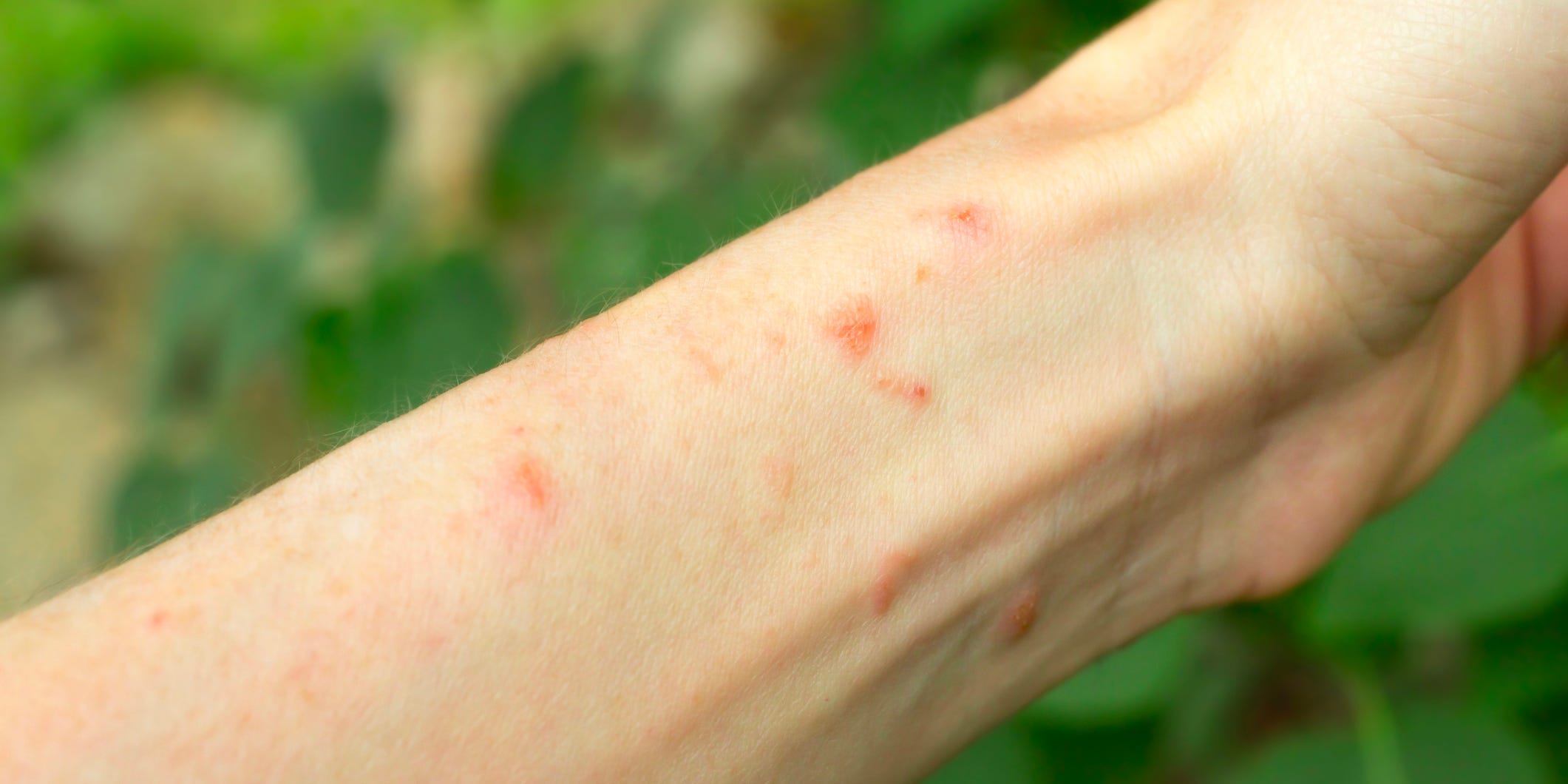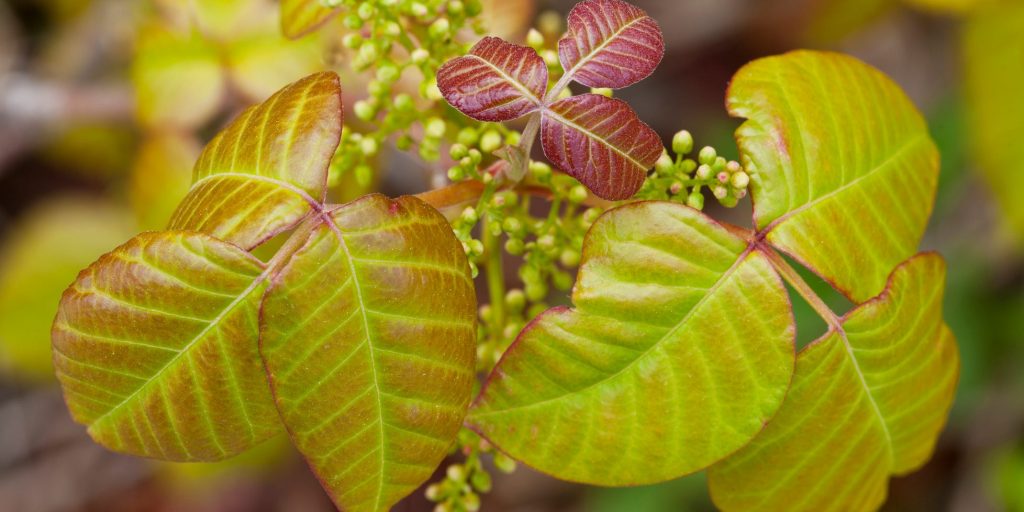
Ed Reschke/Getty IMages
- Poison ivy has leaves in groups of three, a green or reddish tint, and a hairy vine.
- A poison ivy rash looks like small, red bumps that can sometimes progress into blisters.
- To avoid poison ivy, wear long pants and sleeves and wash the affected area within 15 minutes.
- Visit Insider's Health Reference library for more advice.
Poison ivy grows throughout North America, especially in wooded areas, and touching it can give most people an itchy rash. Therefore, identifying and avoiding the plant is crucial if you don't want to be scratching your skin all summer long.
What does poison ivy look like?

Douglas Sacha/Getty Images
North America is home to several subspecies of poison ivy, but the two main types are eastern and western poison ivy. Eastern poison ivy grows as a vine, and western poison ivy grows more like a shrub, but they share these characteristics:
- Leaves. Poison ivy has groups of three leaflets, hence the warning "leaves of three, let it be." The leaflets sometimes have "teeth" or notches on the side. The middle leaflet is larger and has a stalk connecting it to the other two.
- Stems. The stems can be green or reddish, and the area where the leaflets come together sometimes has a red tint.
- Fruit and flowers. The small, berry-like fruit is a cream color, and the flowers are a greenish cream color, but they're pretty nondescript and typically tucked under the leaves, so you may not even notice them, says Nancy Loewenstein, PhD, extension specialist with the Auburn University School of Forestry and Wildlife Sciences.
- Vines. The vine has a hairy appearance.
As seasons change, so can poison ivy. In the fall, the leaves may be red or yellow. In the winter, the plant loses its leaves. However, touching the vine can still cause a rash because all parts of the poison ivy plant – from the roots to the leaves – contain the oil urushiol, which 50% to 70% of US adults are sensitive to.
What does poison ivy rash look like?

Jena Ardell/Getty Images
A rash can develop within hours or days after exposure to urushiol, and it may last for a few weeks. People's reactions vary depending on genetics, skin sensitivity, and number of prior exposures, Hogan says. Reactions may include:
- Intense itching
- Redness
- Swelling
- Blisters, sometimes in a linear pattern
The rash can begin as raised, red, and swollen, and then sometimes progress into painful blisters. If the rash is severe, it may end up covering large parts of your body, Hogan says.
Insider's takeaway
With poison ivy, prevention is the best medicine. Some harmless plants look similar, but if you see leaves of three, it's best to let it be.
However, if you do break out in a rash, a cold compress can provide immediate relief, and over-the-counter creams may help.
But if the rash covers more than a small area and doesn't go away after a few days, you should see a board-certified dermatologist or primary care doctor, Hogan says, as you may need prescription steroids.
"Aside from the fact that it affects the patient's quality of life and their skin is inflamed, it also compromises the skin barrier, and that leaves patients susceptible to getting secondary infections," she says.
Therefore, it's important to be aware of your symptoms and whether they're improving or worsening.
